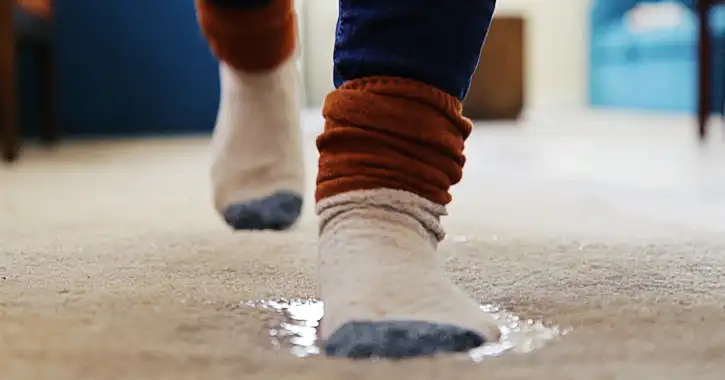
A flood inside your home can be devastating, especially if you have carpeted floors. When a pipe or supply hose bursts, or a plumbing backup starts in your home, it can be overwhelming to know where to begin.
When a flood happens, you need to dry out your carpet as soon as possible, meaning IMMEDIATELY. Leaving your carpet wet can cause dangerous mould to grow. If your carpets are wet from a sewage backup, you may need to throw them out entirely due to hazardous contaminants, but if the flooding was caused by clean water, you may be able to save your carpet.
We’ll show you a few different ways to dry a carpet after a flood that can help you keep your original carpet and avoid the expense of a replacement.
How to Dry Carpet After a Flood
Floods tend to strike quickly and unexpectedly. Even something as small as a laundry room floor drain clog can put your carpets in harm’s way. Because of this, it’s important to know what you need to do to save your carpet before a flood happens, because every second counts.
Once you’ve identified and stopped the leak that caused the flooding, follow these steps to save your carpets. Remember, you need to act fast when you discover your house is flooded in order to fix flood damage.
- Remove Water - Use a shop vac or the water extractor on a carpet cleaning machine to suck as much water as possible out of the wet carpets. Pull back the corners of your carpeting and use a heavy-duty shop vac to remove any standing water underneath the pads.
- Use Strong Fans - Gather up as many fans as possible, borrowing some from your neighbours if you must, and set them up all over the wet area. You can rent high-powered fans to help the process along, but it will take about three to five days for your carpet to dry completely. You’ll know the carpet is dry when it’s completely dry to the touch and there is no dampness on the bottom when you lift it up. If you or a neighbor have one, a dehumidifier will also help speed things up.
- Clean and Sanitize the Flooded Areas - Even if the flood water was clean, you need to clean and sanitize anything the water has dampened to ensure no mould or mildew grows. To do this, clean the surfaces using soap and water. Then deep-clean using a solution made from one cup of bleach to one gallon of water. Wear protective rubber gloves when handling bleach.
- Move All Furniture - Water damage can be hard to spot with heavy furniture covering it up, so be sure to move all your furniture and inspect every area of the carpet for possible dampness.
Save the Hassle, Call the Professionals
Drying your floors after a flood takes a lot of time and effort. To avoid paying for expensive carpet replacements or spending hours of work salvaging your carpet, call for reinforcements. The experts at your local Mr. Rooter® Plumbing can help tackle your emergency plumbing needs stemming from an inconvenient water leak. For emergency plumbing or to schedule an appointment, call your local Mr. Rooter.

